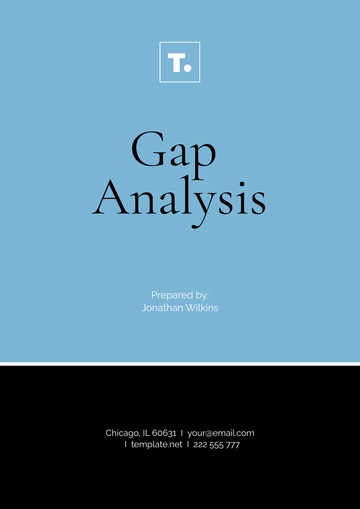Thematic Analysis of Gender Narratives
Prepared By: [Your Name]
I. Introduction
Gender narratives play a crucial role in shaping societal perceptions of gender roles, identities, and expectations. This analysis seeks to delve into the recurring themes within these narratives, identifying how they contribute to the broader discourse on gender. By methodically examining texts, media, and personal stories, this thematic analysis uncovers patterns and insights that influence our understanding of gender, highlighting both historical and contemporary shifts in the portrayal and perception of gender identities.
II. Historical Context
A. The Evolution of Gender Roles
Gender roles have been historically embedded within cultural, social, and economic structures, often reinforcing patriarchal norms. Over time, these roles have undergone significant transformations, driven by changes in societal norms, educational advancements, and legal reforms.
Traditional Gender Roles
Patriarchal Societies: Historically, male authority has dominated both public and private spheres, dictating societal norms and gender expectations.
Domestic Sphere: Women's roles were primarily confined to homemaking and child-rearing, reinforcing the notion of women as caregivers.
Occupational Roles: Gender-specific job roles created significant disparities in pay, opportunities, and societal status, limiting women's participation in the workforce and public life.
Modern Shifts
Feminist Movements: The rise of feminist movements has been pivotal in challenging and dismantling patriarchal structures, and advocating for gender equality and women's rights.
Legal Reforms: The introduction of laws promoting gender equality and protecting against discrimination has facilitated significant strides toward equity in various spheres of life.
Changing Norms: There is growing acceptance of diverse gender identities and roles, moving beyond the binary understanding of gender and embracing fluidity and inclusivity.
III. Recurring Themes in Contemporary Gender Narratives
A. Identity and Self-Expression
Contemporary gender narratives increasingly focus on identity and self-expression, challenging traditional gender norms and embracing a more fluid understanding of gender.
Fluidity of Gender
Non-Binary Identities: There is an increasing recognition of identities beyond the traditional male-female binary, acknowledging the spectrum of gender experiences.
Gender Fluidity: The acceptance that gender can be dynamic, with individuals experiencing changes in their gender identity over time, is becoming more prevalent.
Self-Expression
Fashion and Appearance: Clothing, accessories, and personal style are powerful tools for expressing gender identity, allowing individuals to challenge and redefine gender norms.
Language and Pronouns: The use of inclusive language and correct pronouns is essential in respecting and affirming individual gender identities, contributing to a more inclusive society.
B. Intersectionality
Intersectionality explores how various forms of identity, including race, class, sexuality, and disability, intersect with gender, creating unique and multifaceted experiences.
Diverse Experiences
Race and Gender: Racial identity profoundly impacts gender experiences, often compounding challenges faced by individuals within marginalized communities.
Sexual Orientation: The interplay between gender identity and sexual orientation creates diverse experiences and challenges, particularly for LGBTQ+ individuals.
Socio-Economic Status: Class influences gender roles and opportunities, with socio-economic disparities often exacerbating gender-based inequalities.
C. Resistance and Empowerment
Gender narratives frequently highlight stories of resistance against oppressive structures, alongside movements towards empowerment and equality.
Activism and Advocacy
Grassroots Movements: Local and community-led initiatives play a crucial role in advocating for gender equality and addressing gender-based issues.
Global Campaigns: International efforts, such as the #MeToo movement, have brought global attention to gender-based violence and discrimination, fostering collective action and awareness.
Success Stories
Trailblazers: Individuals who break barriers and challenge gender norms serve as role models, inspiring others to pursue gender equality.
Policy Changes: Legal and institutional reforms, such as the legalization of same-sex marriage and gender recognition laws, mark significant milestones in the fight for gender equality.
IV. Representation in Media
A. Gender Stereotypes
Media is a powerful force in shaping gender narratives, often perpetuating stereotypes but also playing a role in challenging and redefining them.
Common Stereotypes
Film and Television: The "damsel in distress" trope reinforces female dependency and lack of agency, while the "heroic male protagonist" marginalizes female characters.
Advertising: The portrayal of the "ideal body image" in advertising promotes unrealistic standards, contributing to self-esteem issues and body dissatisfaction.
Literature: Gender norms in literature often marginalize female characters, limiting their roles to secondary or supportive positions.
Challenging Stereotypes
Positive Representations: Recent trends in media show a shift towards more nuanced and diverse portrayals of gender, challenging traditional stereotypes and promoting gender equality.
Strong Female Leads: Characters that portray strength, intelligence, and independence are becoming more prominent, offering empowering role models.
Diverse Gender Identities: The inclusion of non-binary and transgender characters in mainstream media is helping to normalize diverse gender identities and experiences.
Impact of Representation
Empowerment: Positive and diverse representations in media contribute to greater self-confidence, aspirations, and a sense of belonging among individuals who see themselves reflected in media.
Awareness: These representations also expand societal understanding of diverse gender experiences, fostering greater empathy and support for gender inclusivity.
V. Conclusion
The thematic analysis of gender narratives reveals an evolving discourse marked by significant challenges and progress. Understanding these themes provides valuable insights into how gender roles and identities are constructed, perpetuated, and transformed. As society continues to explore and challenge these narratives, it moves closer to achieving greater gender equality and inclusivity, creating a more equitable world for all.
Analysis Templates @ Template.net






























